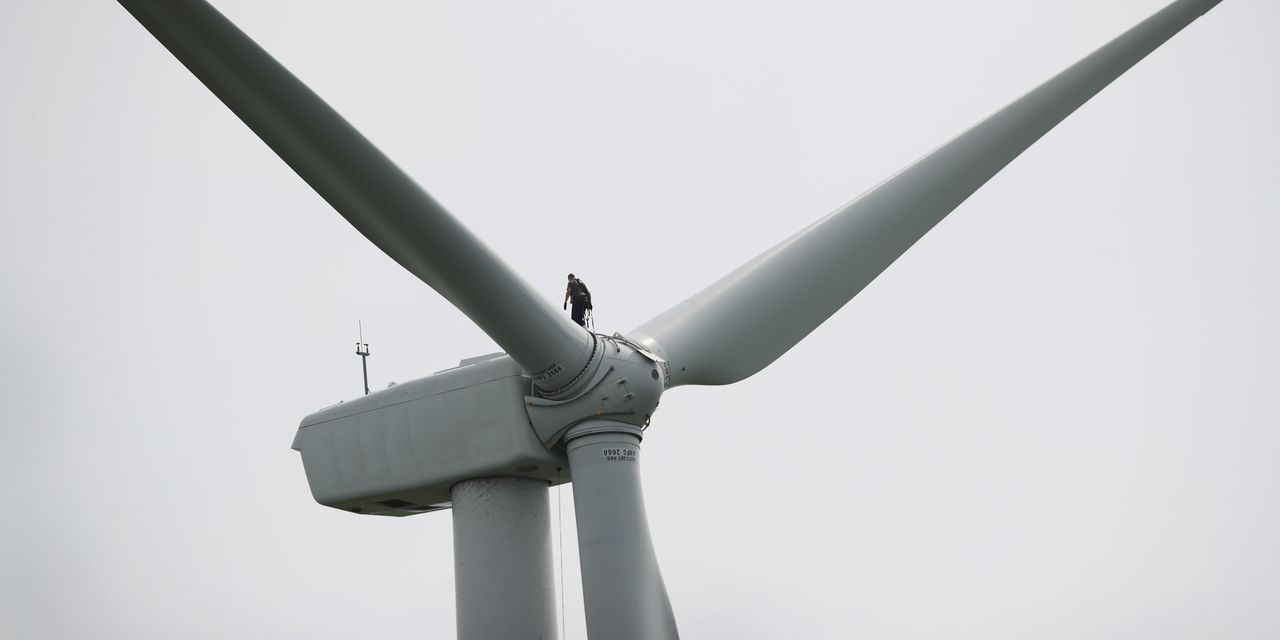
The nation’s more than 3 million clean-energy jobs are nearly evenly split across Republican and Democratic congressional districts, new research out Monday shows.
Nonprofit E2, which tracks clean-energy initiatives, particularly jobs in renewable energy, electric-vehicle manufacturing and electric-grid modernization, conducted the research with outside firm BW Research.
Democratic-led districts make up 54.3%, while Republican-led districts account for 44.9% of all clean-energy jobs. A few districts have unfilled representation.
Tallying up total clean-energy jobs, the top district is led by Rep. Ro Khanna, the California Democrat, whose San Francisco Bay Area district includes Silicon Valley. Speaker Nancy Pelosi’s California 12th is next. She’s followed by Rep. Dan Crenshaw, the Republican of Texas, who represents parts of Houston, then the Utah district of Republican Congressman John Curtis, which includes Salt Lake City. Rep. Katie Porter, the California Democrat who represents much of Orange County, rounds out the top five.
The complete findings can be accessed with this searchable tool using district maps or Zip codes.
The report hits as Congress continues debate on infrastructure and spending bills that include the largest-ever U.S. investments in clean energy, though with initiatives sharply reduced from initial proposals advanced by the Biden administration and leading Democrats. As currently outlined in a framework issued last week by the White House, some $555 billion is tagged for clean energy and other climate-change investments. Biden has said a transition to renewable energy will take the U.S. to net-zero emissions by 2050 after first cutting emissions in half by as soon as the end of the decade.
Also in the backdrop is the United Nations’ COP26 international climate summit just underway in Scotland. U.N. hope persists for major continuing pledges toward slowing global warming, and Biden used the global platform to claim again on Monday that he can push the transition to cleaner energy using American union labor.
That pledge has been challenged by Republicans and others who note the solar market in particular still relies on materials from abroad. In 2000, China was producing close to zero of the world’s solar equipment. By 2012, it was producing 60%, and today it is the world’s dominant maker.
Some workers in traditional fossil-fuel jobs have said they’re worried about training efforts or relocation as they eye having to give up well-paying oil CL00, +0.02% and natural-gas NG00, +1.56% jobs for the renewables space.
Clean-energy jobs pay better than the typical U.S. job, up to 25% more or some $2-$5 more per hour, according to research from Brookings. But petroleum jobs pay some 40% over the median, according to the U.S. Energy and Employment Report, and extraction jobs on drilling sites pay nearly double the national median, according to the Bureau of Labor Statistics.
The E2 research shows that all 435 U.S. congressional districts are home to at least some clean-energy jobs. Seventy-nine districts have more than 10,000 clean-energy jobs. Clean energy accounts for more than 1 in every 100 jobs in 433 districts, while making up 1 in every 25 jobs in 33 districts.
About 2.4 million clean-energy jobs are outside of big cities and urban areas, including nearly 1.2 million in rural and mostly rural districts. In fact, suburban districts account for five of the top 10 districts with the highest clean-job density, and rural districts account for 4 of the top 10.
Jobs tracked for the report focused on both the renewable energy and energy efficiency sectors.
This analysis defines clean-energy employment as jobs in solar energy, wind energy, combined heat and power, bioenergy, non-woody biomass, low-impact hydro power, geothermal, clean-vehicle technologies, clean-energy storage, smart grid, micro grid, grid modernization, advanced biofuels, and energy efficiency including EnergyStar and high-efficiency appliances, efficient lighting, HVAC, renewable heating and cooling, and advanced building materials.
Jobs in retail trade, repair services, water or waste management, and indirect employment or induced employment are not included.










Add Comment